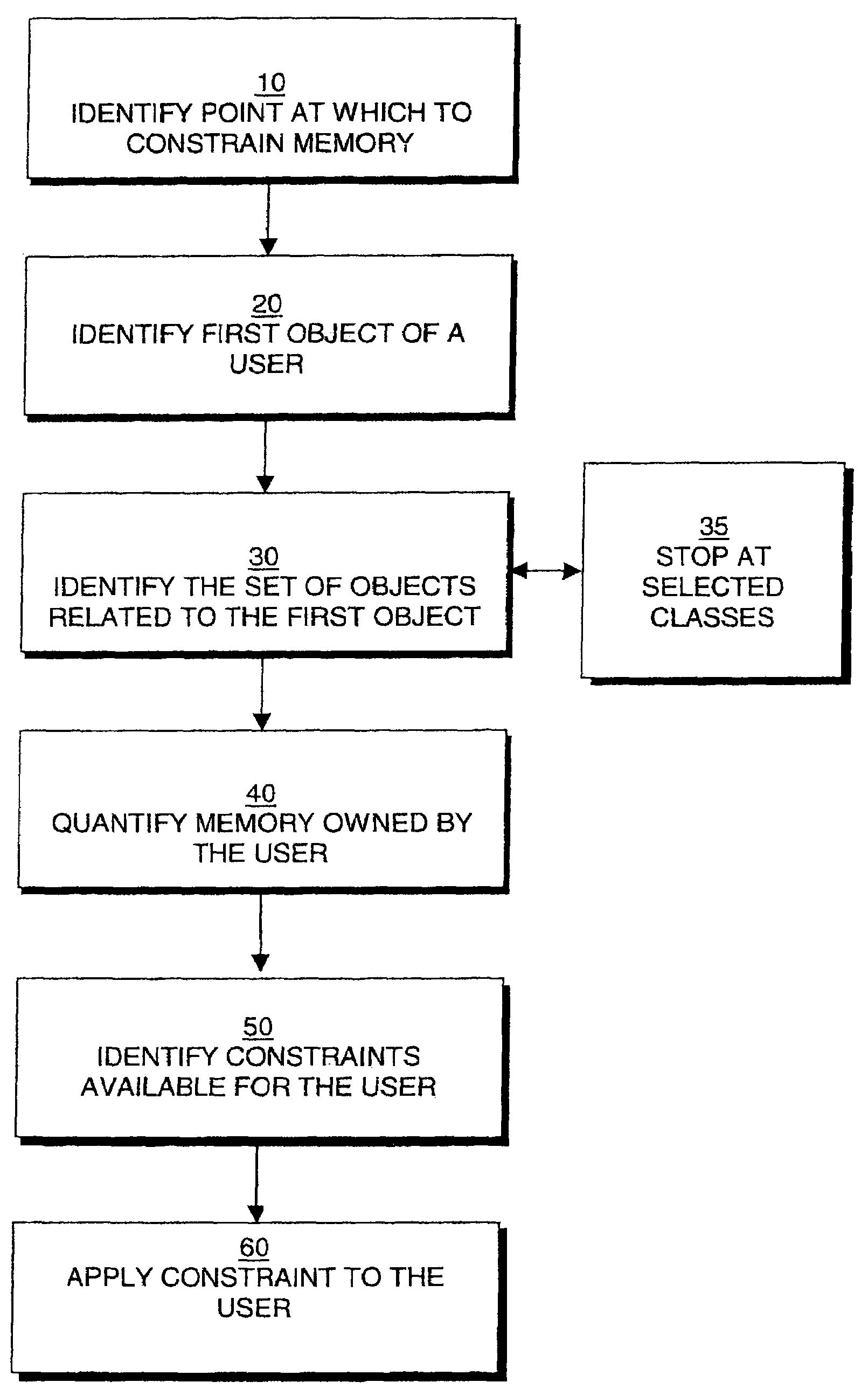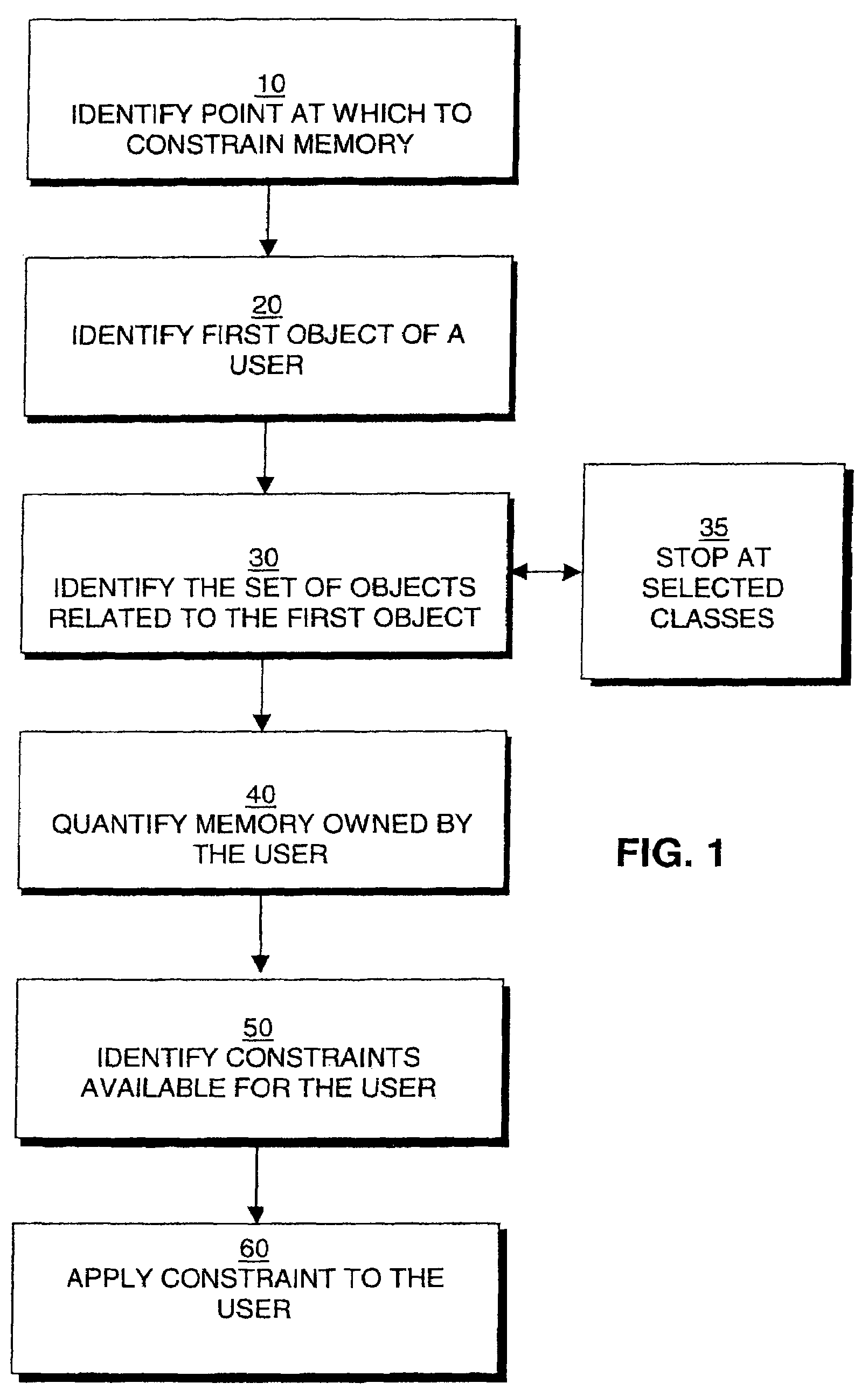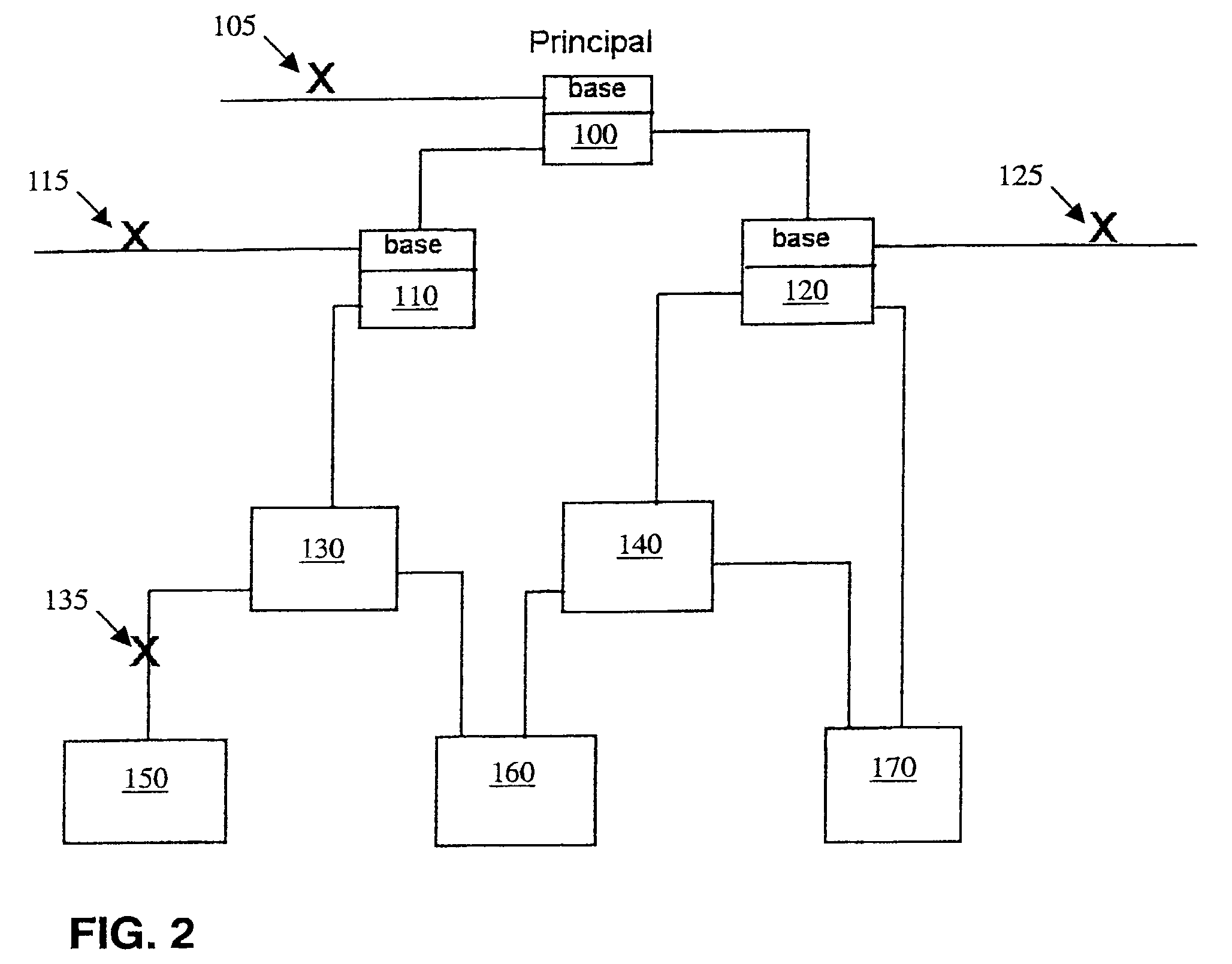Method for managing memory resources in a shared memory system
- Summary
- Abstract
- Description
- Claims
- Application Information
AI Technical Summary
Benefits of technology
Problems solved by technology
Method used
Image
Examples
case a
[0036) above is relatively easy to prevent by maintaining a record of previously identified set members.
case c
[0037) is handled by abandoning the trace at that point once this situation has been detected.
[0038]For Case B), the preferred technique is to leave untraced any Container implementation classes which the user is intended to extend as part of the user's implementation and which may contain references to objects not primarily associated with the user. In addition the well known classfile modification techniques would be employed to prevent the user assigning objects which are personal to the user into static fields of Container or J2SE (Java 2 Standard Edition) classes and thus ‘hiding’ such data from this tracing step.
[0039]Referring now also to FIG. 2, there is shown an illustrative block diagram showing a number of objects relating to a user.
[0040]A principal object 100 which has a base class inheritance represents the user. ‘X’105 is an untraced reference from the base class field of the object 100. This is because references from the base class fields are not traced.
[0041]Object...
PUM
 Login to view more
Login to view more Abstract
Description
Claims
Application Information
 Login to view more
Login to view more - R&D Engineer
- R&D Manager
- IP Professional
- Industry Leading Data Capabilities
- Powerful AI technology
- Patent DNA Extraction
Browse by: Latest US Patents, China's latest patents, Technical Efficacy Thesaurus, Application Domain, Technology Topic.
© 2024 PatSnap. All rights reserved.Legal|Privacy policy|Modern Slavery Act Transparency Statement|Sitemap



